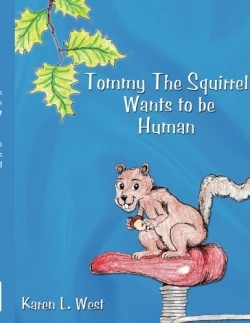It looks like you've stumbled upon a page meant to be read by our code instead of viewed directly. You're probably looking for this page.
Tommy The Squirrel Wants to be Human
Tommy the Squirrel lives a pleasant life in a park in Canada; he plays with his friends, helps out his family, and sometimes watches the humans who visit the park.
But Tommy feels less than satisfied with his easygoing life. While watching a human family who visits the park from the United States, Tommy decides that he too wants to be human. Instead of gathering fruit and nuts for his family to store for the winter, Tommy spends a few days observing the family to learn all he can about being human.
At first, Tommy does not see anything wrong with his dream of being human. While he does not understand why the humans hold sticks over a fire, he feels that he is good at other human activities. Tommy sits on a bicycle seat, and as far as he is concerned, he has ridden the bike: “I can ride a bicycle, eat, and clean up just like the humans. I’m a really good human, thought Tommy.” It isn’t until he is observed by some other animals that he begins to see some of the problems with his plan to be human. And a heart-to-heart with the family’s pet dog really helps Tommy appreciate the life he has as a squirrel.
The illustrations, rendered with crayon, are not overly sophisticated, which may appeal to young readers. It is interesting to note that when Tommy first dreams of being human, he thinks about pitching a tent and driving a car—things he has seen humans do. Later, after talking to the family’s pet, Tommy again dreams of being human, but this time he sees himself in a shirt and tie with a briefcase. While the dog speaks of the freedom that Tommy has as a squirrel, there is no mention of work or formal dress, yet the illustrations use a work outfit to signal the lack of freedom Tommy would have as a human. The dog’s point of view may raise doubts for some children with pets, since the dog expresses dissatisfaction at being on a leash and sometimes being left in a cage.
In the end, Tommy decides that he prefers the freedom of living at the park. He even apologizes to his mother because he has not been gathering food for the winter as he should. The story presents its lesson without being preachy and Tommy concludes that it would be better for him to remain as he is, since he has “a wonderful life.”
Disclosure: This article is not an endorsement, but a review. The publisher of this book provided free copies of the book and paid a small fee to have their book reviewed by a professional reviewer. Foreword Reviews and Clarion Reviews make no guarantee that the publisher will receive a positive review. Foreword Magazine, Inc. is disclosing this in accordance with the Federal Trade Commission’s 16 CFR, Part 255.
